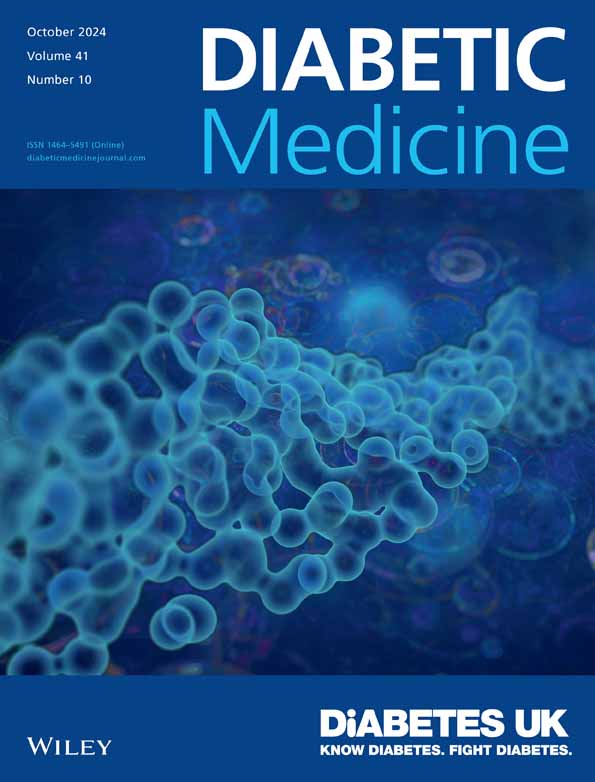Detecting clinical cases of binge eating in diabetes care: Introducing the Diabetes Eating Problem Survey-10 (DEPS-10) for type 1 and type 2 diabetes
Abstract
Aims
Binge eating disorders (BED) are underdiagnosed in diabetes care, despite being the most common eating problem for diabetes patients. While diabetes-specific screening for disordered eating behaviour is recommended, the only diabetes-specific instrument available, Diabetes Eating Problem Survey-Revised (DEPS-R), focuses on type 1 diabetes and rapid-acting insulin, limiting its use across diabetes types and treatment regimens. This study aimed to develop a non-insulin version of the DEPS-R and evaluate its screening performance for BED in people with type 1 and type 2 diabetes.
Methods
The DEPS-R was reduced to 10 non-insulin-specific items (DEPS-10). As part of the ongoing pro-mental study, 679 people with type 1 or type 2 diabetes completed the baseline survey and took part in diagnostic interviews to assess BED. The screening performance of the DEPS-10 was tested via receiver operating characteristic (ROC) curve analysis and compared with DEPS-R and food-related items of the Problem Areas In Diabetes (PAID).
Results
N = 24 participants (total = 3.5%; type 1 = 2.9%, type 2 = 4.3%) were diagnosed with a current BED. The DEPS-10 performed well in screening for BED (area under the curve [AUC] = 0.92, p < 0.001) comparable with the DEPS-R (AUC = 0.92, p < 0.001) and exceeded the performance of food-related PAID items (AUC = 0.82, p < 0.001). A cut-off score of ≥15 showed optimal sensitivity and specificity in BED screening. People who met the cut-off had significantly higher BMI and HbA1c and more diabetes distress, depressive and anxiety symptoms.
Conclusions
DEPS-10 is a reliable screening instrument for BED. Its associations with glycaemic and mental health outcomes reflect its good construct validity comparable to DEPS-R.


 求助内容:
求助内容: 应助结果提醒方式:
应助结果提醒方式:


